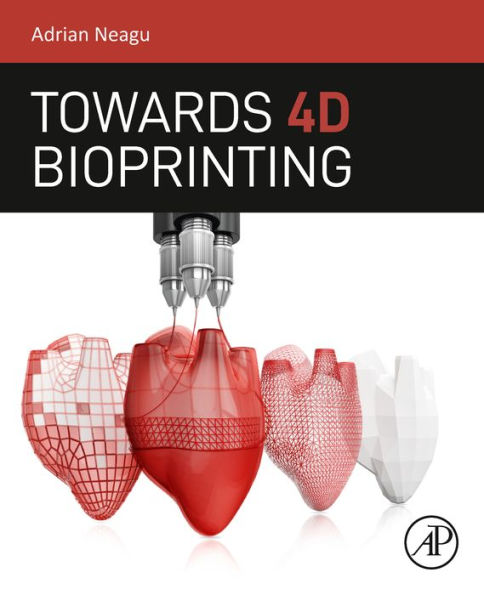Towards 4D Printing presents the current state of three-dimensional (3D) bioprinting and its recent offspring, 4D bioprinting. These are attractive approaches to tissue engineering because they hold the promise of building bulky tissue constructs with incorporated vasculature. Starting with the discussion of 3D and 4D printing of inanimate objects, the book presents several 3D bioprinting techniques and points out the challenges imposed by living cells on the bioprinting process. It argues that, in order to fine-tune the bioprinter, one needs a quantitative analysis of the conditions experienced by cells during printing. Once the printing is over, the construct evolves according to mechanisms known from developmental biology. These are described in the book along with computer simulations that aim to predict the outcome of 3D bioprinting.In addition, the book provides the latest information on the principles and applications of 4D bioprinting, such as for medical devices and assistive technology. The last chapter discusses the perspectives of the field. This book provides an up-to date description of the theoretical tools developed for the optimization of 3D bioprinting, presents the morphogenetic mechanisms responsible for the post-printing evolution of the bioprinted construct and describing computational methods for simulating this evolution, and discusses the leap from 3D to 4D bioprinting in the light of the latest developments in the field. Most importantly, Towards 4D Printing explains the importance of theoretical modeling for the progress of 3D and 4D bioprinting. - Presents theoretical tools needed for the optimization of the bioprinting process - Describes the principles and implementation of computer simulations needed to predict the outcome of 3D bioprinting - Analyzes the distinctive features of 4D bioprinting along with its applications and perspectives
1137884156
Towards 4D Bioprinting
Towards 4D Printing presents the current state of three-dimensional (3D) bioprinting and its recent offspring, 4D bioprinting. These are attractive approaches to tissue engineering because they hold the promise of building bulky tissue constructs with incorporated vasculature. Starting with the discussion of 3D and 4D printing of inanimate objects, the book presents several 3D bioprinting techniques and points out the challenges imposed by living cells on the bioprinting process. It argues that, in order to fine-tune the bioprinter, one needs a quantitative analysis of the conditions experienced by cells during printing. Once the printing is over, the construct evolves according to mechanisms known from developmental biology. These are described in the book along with computer simulations that aim to predict the outcome of 3D bioprinting.In addition, the book provides the latest information on the principles and applications of 4D bioprinting, such as for medical devices and assistive technology. The last chapter discusses the perspectives of the field. This book provides an up-to date description of the theoretical tools developed for the optimization of 3D bioprinting, presents the morphogenetic mechanisms responsible for the post-printing evolution of the bioprinted construct and describing computational methods for simulating this evolution, and discusses the leap from 3D to 4D bioprinting in the light of the latest developments in the field. Most importantly, Towards 4D Printing explains the importance of theoretical modeling for the progress of 3D and 4D bioprinting. - Presents theoretical tools needed for the optimization of the bioprinting process - Describes the principles and implementation of computer simulations needed to predict the outcome of 3D bioprinting - Analyzes the distinctive features of 4D bioprinting along with its applications and perspectives
125.0
In Stock
5
1

Towards 4D Bioprinting
300
Towards 4D Bioprinting
300Related collections and offers
125.0
In Stock

Product Details
| ISBN-13: | 9780128187456 |
|---|---|
| Publisher: | Elsevier Science & Technology Books |
| Publication date: | 11/17/2022 |
| Sold by: | Barnes & Noble |
| Format: | eBook |
| Pages: | 300 |
| File size: | 114 MB |
| Note: | This product may take a few minutes to download. |
About the Author
What People are Saying About This
From the B&N Reads Blog
